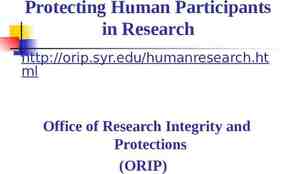Overview of the International Human Rights System OHCHR Treaty
13 Slides1.21 MB
Overview of the International Human Rights System OHCHR Treaty Body Capacity Building Programme
The UN main Human Rights Mechanisms General Assembly Secretariat OHCHR* Adopts Creates Human Rights Treaties Human Rights Council Treaty Bodies (Committees) Universal Periodic Review *OHCHR supports the work of the HRC and the mechanisms Special Procedures
Overview of international human rights treaties Specific phenomena Universal Declaration of Human Rights International Covenant on Civil and Political Rights International Covenant on Economic, Social and Cultural Rights International Convention on the Elimination of All Forms of Racial Discrimination Convention against Torture and other Inhuman, Degrading Treatment or Punishment Convention on Enforced Disappearances Specific groups International Convention on the Elimination of All Forms of Discrimination against Women Convention on the Rights of the Child Convention the rights of Migrant Workers and members of their families Convention the rights of persons with disabilities
Two Covenants covering civil, political, social and cultural rights Covenant on Civil and Political Rights (ICCPR), 1966 1st Optional Protocol (individual complaints), 1966 2nd Optional Protocol (abolition of the death penalty),1989 Covenant on Economic, Social and Cultural Rights (ICESCR), 1966 Optional Protocol (individual complaints), 2008
Human Rights treaties addressing specific phenomena The International Convention on the Elimination of All Forms of Racial Discrimination (ICERD), 1965 The Convention against Torture and Other Cruel, Inhuman or Degrading Treatment or Punishment (CAT), 1984 Optional Protocol to CAT (establishment of the Subcommittee on the Prevention of Torture and other Cruel, Inhuman or Degrading Treatment inspections of detention facilities) The International Convention for the Protection of All Persons from Enforced Disappearance (ICCPED), 2006
Human Rights treaties protecting specific groups The Convention on the Elimination of All Forms of Discrimination against Women (CEDAW), 1979 Optional Protocol (communications) The Convention on the Rights of the Child (CRC), 1989 OP on the sale of children, child prostitution and child pornography OP on the involvement of children in armed conflict OP on a communications procedure The International Convention for the Protection of the Rights of All Migrant Workers and Members of Their Families (CMW), 1990 The Convention on the Rights of Persons with Disabilities (CRPD), 2006 Optional Protocol (communications)
The Human Rights treaties Legally binding treaties negotiated and adopted by States within the framework of the United Nations General Assembly Obligations undertaken voluntarily by States Once ratified/acceded to, treaty obligations are not optional: legally binding obligations Obligations entail a threefold responsibility to: Respect (Refrain from violating a right ) Protect (Prevent violations of a right ) Fulfil (Take measures to ensure the realization of a right )
Status of ratifications of the core international human rights treaties today *: ICCPR: 172 OPI 116 OP II 87 ICESCR: 169 OP 24 ICERD: 180 CEDAW: 189 OP 112 CAT: 166 OP 89 CRC: 196 OPAC 168 OPSC 176 ICMW: 54 CRPD: 177 OP 94 ICCPED: 59 *As of May 2019 OPIC 44
The UN human rights treaty system
Treaty bodies Mandate: to monitor the implementation of the relevant treaty by States parties Composed of independent experts, nominated and elected by States parties for fixed, renewable terms of four years Membership: 10-25 members depending the Committee In total: 172 members in total (10 TBs) Criteria: Expertise, equitable geographical distribution, representation of principal legal systems and different forms of civilization and balanced gender representation Non-remunerated, and serve solely in their personal capacity Meet for 1-4 weeks session, held 2-3 times per year in Geneva
Human Rights Council Intergovernmental body 47 Members Serviced by OHCHR Addresses human rights violations Works to prevent human rights abuses Responds to emergencies International forum for human rights dialogue Recommends developments in human rights law Periodically reviews country situations (UPR)
Mechanisms of the HRC: Universal Periodic Review (UPR) Inter-governmental peer review Each State reviewed in a 4,5 year cycle Reviews based on: National reports from the States under review Compilation report including information from UN experts and bodies Compilation report including information from other stakeholders (NGOs, NHRIs, ) HRC issues a report with recommendations and commitments of the State concerned
Mechanisms of the HRC: Special Procedures Special Procedures* 44 thematic mandates 10 mandates relating to countries or territories Appointed by the Human Rights Council Monitor human rights in different countries or specific issues Research issues of concern Country visits Receive and consider direct complaints Appeal to governments Respond to emergencies Report to the Human Rights Council *as of May 2019


















